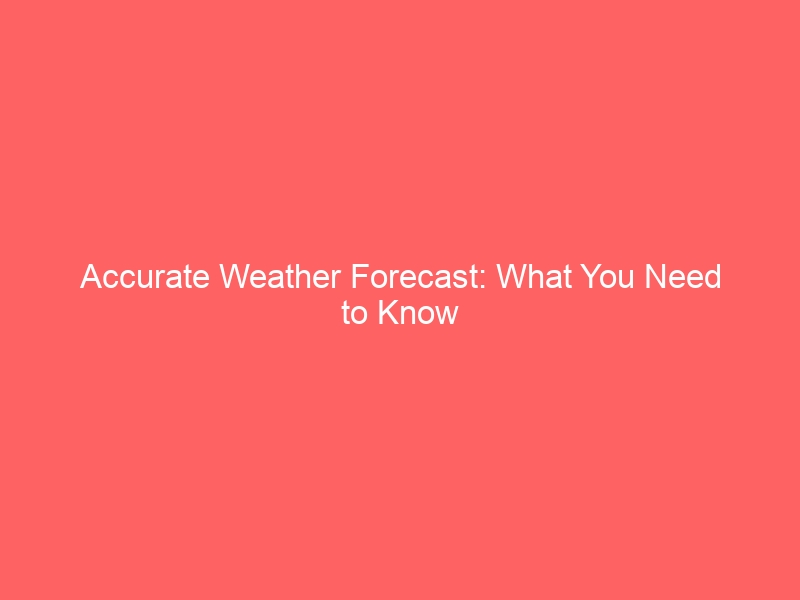Weather forecasting plays a crucial role in our daily lives. Whether it’s planning a trip, deciding what to wear, or preparing for extreme weather events, accurate weather forecasts are essential. With the advancement of technology, weather forecasting has become more precise and reliable. Here’s what you need to know about accurate weather forecasts.
Utilization of Data and Technology
Meteorologists use a variety of tools and data sources to create accurate weather forecasts. These include satellite imagery, radar, weather stations, and computer models. With these tools, meteorologists can track weather patterns and atmospheric conditions to make predictions about temperature, precipitation, wind speed, and more.
Modern technology has also led to the development of advanced computer models that can simulate complex weather systems. These models take into account important factors such as air pressure, temperature, humidity, and wind patterns. By analyzing large amounts of data and running simulations, meteorologists can make more accurate predictions about the weather.
Improvement in Forecast Accuracy
In recent years, the accuracy of weather forecasts has improved significantly. This is due to advancements in technology and the use of more sophisticated modeling techniques. Today, forecasters can provide more accurate short-term and long-term weather predictions, giving people more reliable information to plan their activities and make informed decisions.
For example, short-term forecasts, which cover a period of up to five days, have become much more reliable. This is particularly important when it comes to preparing for severe weather events such as hurricanes, tornadoes, and winter storms. Long-term forecasts, which cover a period of one to two weeks, have also seen improvement in accuracy, allowing for better planning for vacations, outdoor events, and agricultural activities.
The Importance of Reliable Forecasts
Accurate weather forecasts are essential for a wide range of industries and activities. Agriculture relies on weather forecasts to plan planting and harvesting, and to protect crops from extreme weather conditions. Transportation industries use weather forecasts to plan routes, minimize delays, and ensure passenger safety. Energy companies depend on weather forecasts to manage power generation and distribution, especially during extreme weather events. And individuals rely on weather forecasts for everyday activities such as planning outdoor events, travel, and clothing choices.
Inaccurate weather forecasts can have significant impacts on these industries and activities, leading to financial losses, safety concerns, and disruption of daily life. Accurate weather forecasts play a critical role in minimizing these impacts and helping people and organizations make informed decisions.
Understanding Forecast Limitations
While weather forecasting has become more reliable, it’s important to understand that there are still limitations to its accuracy. Weather is a complex and dynamic system, and there are many factors that can influence it. As a result, there will always be some level of uncertainty in weather forecasts, particularly for long-term predictions.
Additionally, extreme weather events such as hurricanes, tornadoes, and severe storms can be difficult to predict with absolute certainty. While meteorologists can provide advanced warnings and guidance, there is always some level of uncertainty with these events.
In conclusion, accurate weather forecasts are essential for our daily lives and for a wide range of industries. Advancements in technology and the use of sophisticated modeling techniques have led to significant improvements in forecast accuracy. While there are still limitations to the accuracy of weather forecasts, they continue to play a vital role in helping people and organizations make informed decisions and stay safe in unpredictable weather conditions.
Accurate Weather Forecast: What You Need to Know




